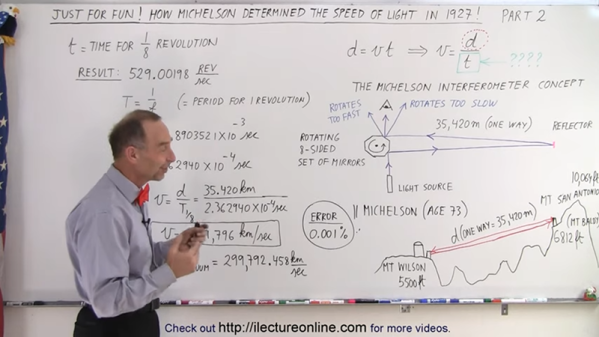It is hard to remember that a lot of high tech research went on well before the arrival of electronic computers, lasers, and all the other things that used to be amazing but are now commonplace. That’s why we enjoyed [Michel van Biezen’s] two part post on how Michelson computed the speed of light in 1927. You can see the videos below.
Michelson wasn’t the first, of course. Galileo tried. He sent an assistant to the top of a hill with a lantern. When the assistant saw Galileo’s lantern, he was to uncover his lantern. They practiced near each other to account for reaction time. But when the assistant was 3 km away, it didn’t take any more time. The implication was that light traveled instantaneously, but, of course, it is actually just really fast.
By 1927, Michelson tried what was in effect the same technique but with better technology, and this time they put a reflector about 35 km away meaning the light had to go to the reflector and back for a total of about 70 km.












